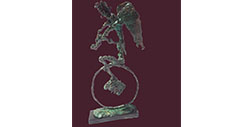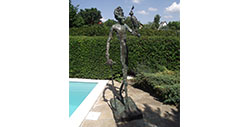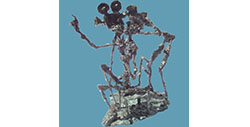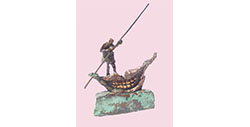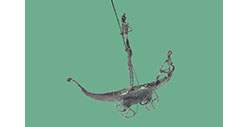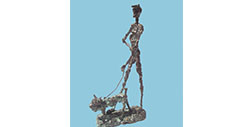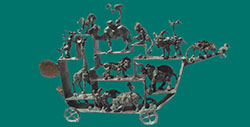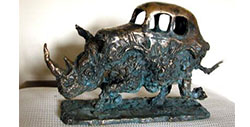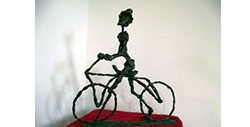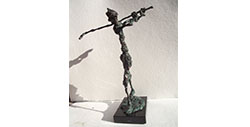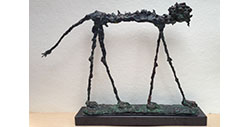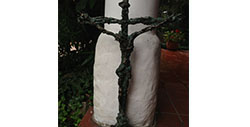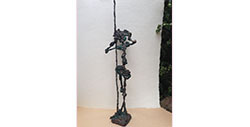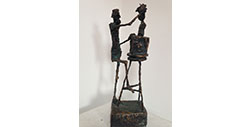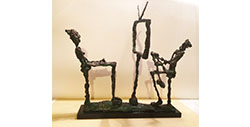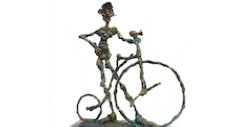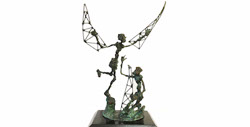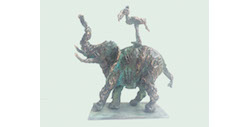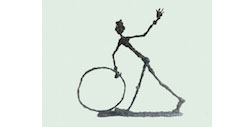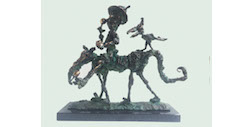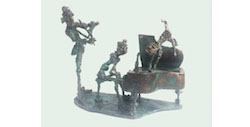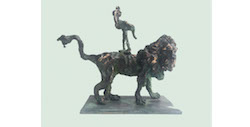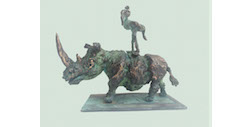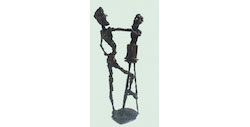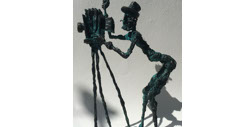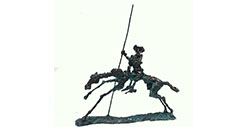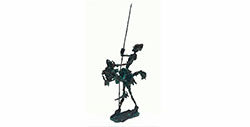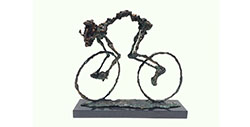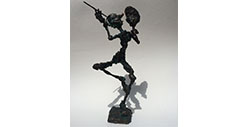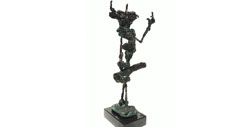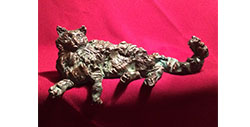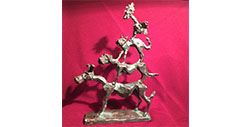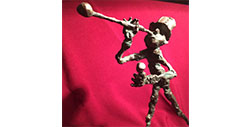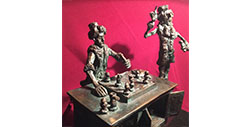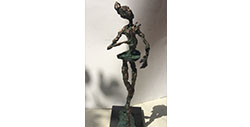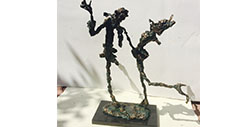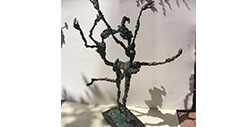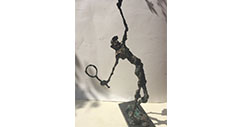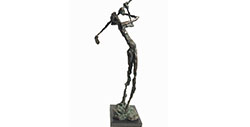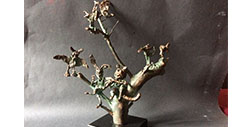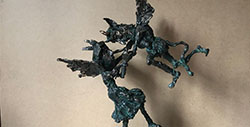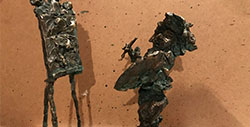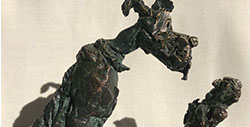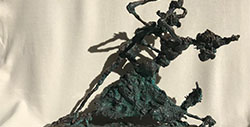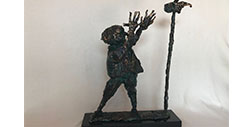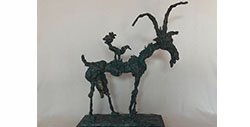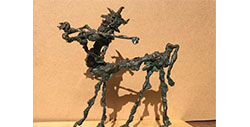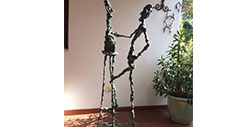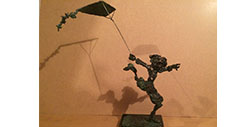My Sculptures
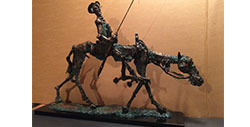
Don Quijote and Rocinante
Rocinante's Head Don Quijote from a different angle Head of the Don Quijote, 70x70x13cm, bronze
Tibor Wehner
The painter Ernő Tóth’s sculptures
Looking back classical art history and examining artistic events of our days, we find the works of several artists who have manifold and multifaceted activities. We know many artists working in different branches of the Hungarian fine and industrial arts - if it still makes sense to consider such categories when dividing lines between artistic genre criteria are becoming increasingly indistinct.
Nevertheless there are a great number of contemporary artists - emphasising blindly the name and works of only some of them: Pál Deim, László Paizs, Tamás Szabó, István Bodóczky or István ef Zámbó - who are active both in the field of traditional and/or abstract painting and sculptural arts making traditional or form breaking composition placed either in a plane or in space.
Ernő Tóth is also one of the members of this excellent company, whose work finally means a pure formula: he has regular paintings and sculptures. However, his paintings surely dominate in his oeuvre. We have had the opportunity to experience his paintings for more than two decades, while his sculptures have only appeared in the exhibition halls since the 90’s.
The painter’s activity is closely connected to his sculptural activity - it seems as if the main characters from Ernő Tóth paintings sprang to life in his sculptures. Two approaches to the same concept the same artistic view: the same grotesque-ironical tone here and there but the stresses of course are different in paintings and sculptures.
The undressed, lonely heroes of the brightly coloured paintings with whirling motifs return as one- or multi shaped, individual bronze works made with wax flowing technic. The thin stick-like figures create vertical stresses - we rarely see compositions on a horizontal axis such as Don Quijote. The formation of these figures shows us the wish to manifest such caricature-like expressions as: the deformed, elongated body parts, strange dimensions, enlarged and exaggerated features that the sculpture offers. These characteristics finally coalesce into a form that allows our receptive senses to enable us to derive from our objective position what these sculptures offer. The heroes of Ernő Tóth’s sculptures are clowns or clown-like figures. Casanovas - or fellows fancying themselves Casanova. Yet they are doubtlessly helpless against the world and even themselves, figures who are hesitating and clumsy but fanatically struggle on in their petty or large-scale affairs.
There is always something - as if it was a fixed point in the universe - in their hands: ice-cream, balloon, mask, fan, violin or a fish and this accentuated gesture makes the scene theatrical.
The caricature figures guard their seriousness and sublimity with fine simplicity. They are the players in the whirling fictive drama, which is brought to life by the bronze sculptures. The various, odd forms, devoid of all conformity, are rich and inventively shot through with contour effects, the scabrous surfaces inducing sculptures saturated with anxiety, tension and excitement.
In Ernő Tóth’s paintings as well as in his sculptures the fairy-tale world and the real world glitter together: pitifulness becomes heroism, tragedy turns into comedy and intimate lyrical confession changes to ironical-grotesque (self)mockery. Sadness stands very close to cheerfulness, almost merging in Ernő Tóth’s sculptures, only to separate again - all in the same work.
